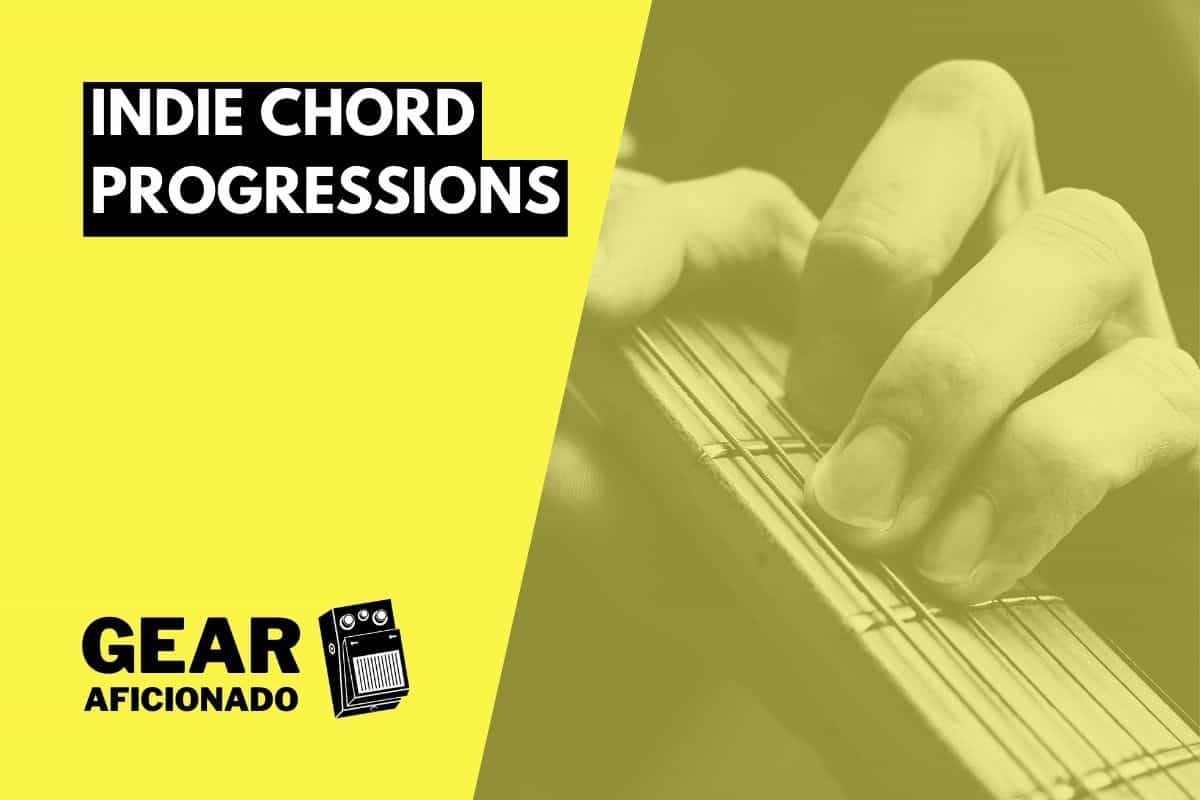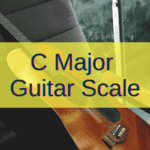Indie music has seen a meteoric rise in the past few decades. Indeed, the angst and weirdness of Grunge mixed with the relaxed vibes of alternative rock and the chill element coming from pop, neo-soul, and folk gave this, often psychedelic, musical style its eclectic form that’s been so appealing to the masses.
But how do you play indie music on guitar? Moreover, what’s indie music in the first place?
Well, welcome to this half-theoretical and half-practical piece about this hip musical style. We’re going to define it, give you some examples to listen to, review some chords as well as the right approach to getting the “indie tone”, and finish it all up with 15 amazing indie chord progressions so you can practice.
Let’s get weird!
Defining “Indie”; Mission Impossible?
Let’s begin this adventure by defining “indie”. I know, you’ve heard the term a million times used to describe bands that belong to different genres. For example, you have Mac DeMarco as an indie artist, but you also have Arcade Fire. Moreover, the almighty Arctic Monkeys are considered indie but also Pixies and The Smiths.
So, what’s the defining characteristic of the indie genre?
Well, in its roots, the label “indie music” was created to separate the bands that were signed to a major record label and those that embraced a DIY attitude with their music. Yes, “indie” is short for “independent”. The real difference in those times was that, while the signed acts created music to make a company make money, the indie bands were exploring new sonic territories, experimenting with sounds, and creating music from a different perspective.
Therefore, what we can say about the “indie” label is that it’s very close to “alternative music” in the sense that these are artists that don’t necessarily follow the mainstream trends or tried-and-true formulas to make music. So, what you can expect from indie music is more freedom and a focus on novelty rather than on what’s right and what’s wrong.
For example, Mac DeMarco released an album with close to 200 songs in the first half of 2023. That can be considered commercial suicide, but it’s part of the indie music spirit.
Some Bands to Check Out
Inside what we call “indie” we have several different sub-genres like indie rock, indie pop, and indie folk. So, what are some cool bands to check out in each of these styles?
Let me give you a hand with that:
- Indie Rock – Arctic Monkeys, The Smiths, The Decemberists, Pixies, The Libertines, Sonic Youth, The White Stripes, Pavement, and The Strokes.
- Indie Pop – Fun, Belle & Sebastian, Tegan and Sara, Billie Eilish, Lorde, Feist, Haim, The XX, Cigarettes After Sex, and Tame Impala.
- Indie Folk – Edward Sharpe and the Magnetic Zeros, Mumford & Sons, The Lumineers, Fleet Foxes, The Magnetic Fields, and Father John Misty.
Indie Chords
We’re going to be playing indie music, so we have to get a hand of the chords we’ll be using to play this style. I know what you’re thinking: “But there’s music from so many genres here, how can we settle on a bunch of chords!?” Well, there’s a common, ethereal, invisible thread that brings all these elements together, the role of the guitar.
Yes, for most of these bands, the guitar is a driving force; it’s the instrument pushing the band forward. For others, it is more about synthesizers and small chords.
We’ll address both approaches.
Power Chords (or Fifths)
To begin with, one thing you have to know is power chords. Yes, these simplified versions are the backbone of a lot of what’s happened with indie music. How do you put together a power chord? Well, it’s very simple: you just have to pick a note and use its fifth. Furthermore, for guitarists’ convenience, the fifth is always one string below, two frets away from the tonic or root.



PRO TIP: After long years of playing power chords (or fifths), I learned how to make them thicker. You can just repeat the tonic or root by using its octave. Yes, the octave for any of these chords is right below the fifth. Therefore, you won’t add any more harmonic information to the chord but will thicken up the sound.
Here’s an example:

PRO TIP 2: Since the power chords or fifths are made using only the tonic and the fifth, there’s no third to indicate the chord’s quality. Therefore, power chords are neither major nor minor.
Seventh Chords
Another great set of chords for indie music is the seventh-chord set. To construct a seventh chord, all you need to do is add the seventh note of the scale to any major or minor triad. Wait, did I go too fast? Does that sound like a lot of fancy mumbo jumbo to you? Let’s break it down.
Any chord, major, minor, or diminished is a triad (AKA a group of three notes). Mostly, it’s the root, the third, and the fifth. In the case of minor chords, you have the root, a flat third, and the fifth.
For example, C major is C – E – G while C minor is C – Eb – G. Well, both those chords can be transformed into their seventh version:
Cmaj7: C – E – G – B
Cm7: C – Eb – G – B
Now, when you see a chord with just the number seven next to it, it’s because it’s a dominant seventh chord (the most common kind) and you form it with a flat seventh. So, in this case:
C7: C – E – G – Bb
You can add the seventh note to any chord you want to spice up your compositions. Here are the diagrams for your chords:
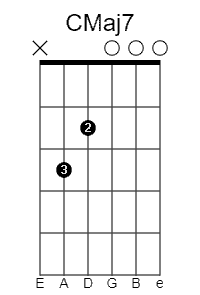

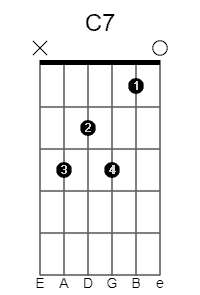
Finally, let’s take a look at a very indie-friendly way of playing which is replacing full chords for just intervals. In this case, what we can focus on is major and minor 6th intervals. These are two notes that are a sixth away. For example, if we were to play an A major 6th interval, it would look something like this (we’re using C and its sixth, A):
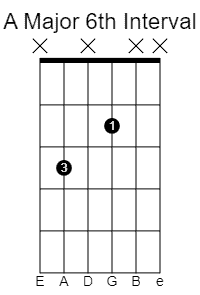
Indie (Unwritten and fully breakable) Rules
Indie music comes from total freedom, therefore these are, by no means, rules written on stone. Rather, you can think of them as a nice set of suggestions that can indie-up your game.
Drop the Distortion
One of the main things about indie is that distortion is very rarely found. For example, if you want to make accurate versions of songs by the Arctic Monkeys or The Libertines, what you need is overdrive rather than distortion. Indeed, overdrive and fuzz are more indie-friendly than distortion is.
Embrace Minimalism
Just like it happens in punk rock, for indie music less is more. This applies to many aspects of playing, writing, and performing. On one hand, attitude is non-negotiable and is, mostly, way more meaningful than the instrument you’re playing. Also, ego-driven virtuosity has no room in indie music; therefore, you need to embrace minimalism from the choice of chords to how much you play in a song. Remember, indie music is about having fun rather than impressing anybody.
Mind Your Strumming
Speaking of attitude and embracing minimalism, the way you strum your guitar is very important. Yes, indie music brought back the lost art of arpeggiating, playing simple two-note chords, and playing less. Moreover, you need to find beauty in simplicity and take it from there; if the song requires you to be silent for two entire bars, so be it.
Forget about Solos
Traditional guitar playing isn’t the most desirable approach for an indie band. Therefore, there’s no room for lengthy solos, and guitarists (or keyboardists) need to replace those with singable simple melodies that can sit comfortably over the given set of chords. Indie is not about ripping it with your fingers but about finding the memorable melody that can take the song to the next level.
15 Indie Chord Progressions
- v – iv – III – i
- IV – vi – V – ii
- I – I – vi – IV7 – V
- i – VII – III – iv – v
- i – i – iv – v
- I – I – V – V – IV7 – IV7 – I – I
- i – III
- I – I – I – I – vi7 – vi7 – IV7 – IV7
- I – vi – iii – IV
- i – v – VI – III
- I – V – vi – IV
- I – I7 – iii – IV – IV7
- ii – iii
- IV – V – IV – I
- V – IV – I – V
The Bottom End
Indie music is all about freedom, rejecting old standards, escaping clichés, and having fun. Yet, just like any other musical style, there’s a common approach that keeps it all together.
We’ve seen how to tackle indie guitar playing from the chords to the strumming and gave you 15 amazing progressions to play with and have fun.
Isn’t it about time you indie-up your game?
Happy (indie) playing!

Hello there, my name is Ramiro and I’ve been playing guitar for almost 20 years. I’m obsessed with everything gear-related and I thought it might be worth sharing it. From guitars, pedals, amps, and synths to studio gear and production tips, I hope you find what I post here useful, and I’ll try my best to keep it entertaining also.

